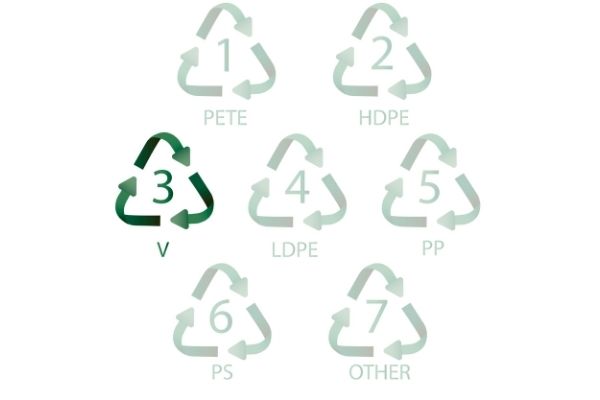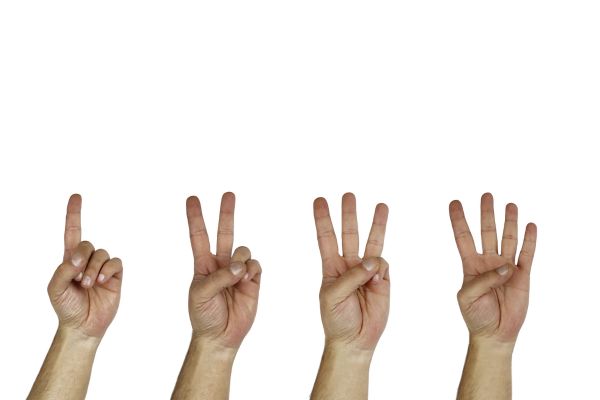Polyvinyl chloride, or just vinyl, is one of the oldest synthetic materials in industrial production. By vinyl, we don’t mean music records, although, for a period, these records were made out of vinyl plastic.
Polyvinyl chloride was discovered in 1872 by German chemist Eugen Baumann however, it wasn’t until the late 1920s that it became a popular material. Some of the first products made from PVC were golf balls and shoe heels, but soon the world was filled with raincoats, shower curtains, PVC pipes, and other items.
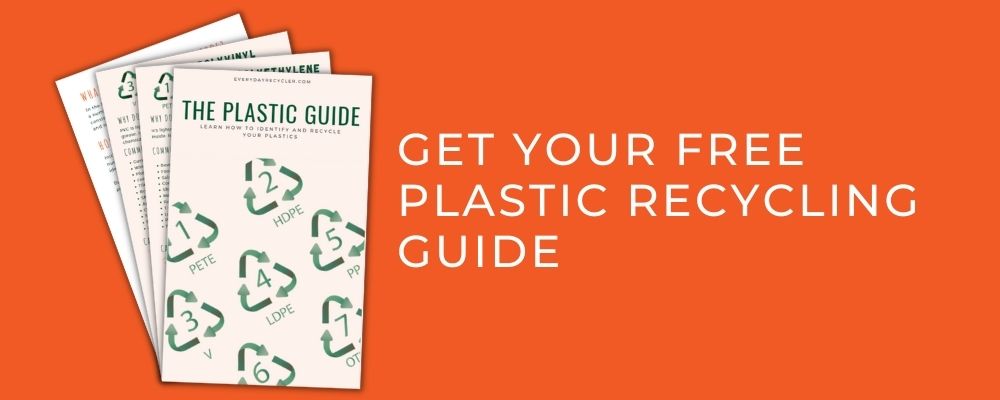
Polyvinyl chloride, or PVC plastic, is a bit different from other plastics in that it has chlorine as one of its main ingredients. The chlorine is mixed with hydrocarbons to form a monomer called vinyl chloride. This is then polymerized to form polyvinyl chloride. Read What is plastic? to learn more.
The chlorine is what helps make the PVC an attractive material to use. It brings useful properties to the vinyl. For example, it helps it become more stable and gives it waterproof and flame-retardant properties. Chlorine is a readily available substance, so vinyl is cheap to produce.
Unfortunately, the addition of chlorine also makes PVC hazardous to manufacture and dispose of. When incinerated polyvinyl chloride releases carcinogenic compounds and there is still ongoing research into other potential health issues.
Why do we use PVC?
The properties of PVC include:
- PVC is lightweight but very strong and can take high impacts.
- Resistant to grease, oil, and chemicals.
- It has good chemical resistance, weatherability, and stable electrical properties.
- It is relatively impervious to sunlight and weather.
- Many other chemicals can be added to PVC to create a multitude of properties and textures.

Common items made from PVC
PVC can be found across many industries and products. One of the most common vinyl items you probably come into contact with every day is your credit card or all those store cards that fill your wallet.
Vinyl is also a popular material used in industries such as building and construction, medical, transportation, and electrical. It also plays a big part in the delivery of water across the world.

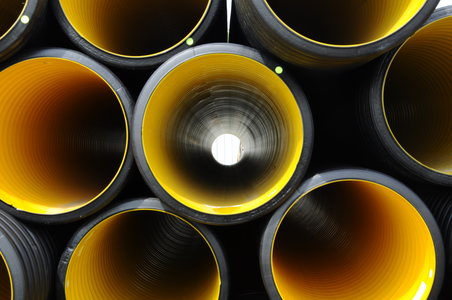
Some products recognizable to the everyday person include:
Rigid polyvinyl chloride
- Gutters
- Window frames
- Plumbing and Sewage pipes
- Fencing, decking, railing
- Tiles
- Bottles such as Shampoo bottles
- Shoes
- Appliances
- Rigid packaging applications – blister packs & take away clamshells although these have been phased out in a lot of places.
- Credit cards, bank cards and store cards
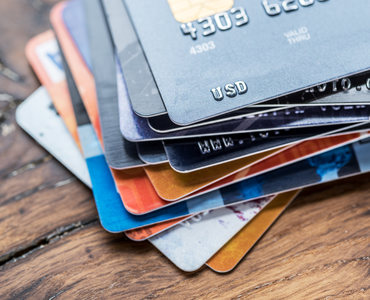
Flexible polyvinyl chloride
- Shower curtains
- Raincoats
- Cling films and meat wrap
- Medicine packaging
- Fire retardant clothing
- Imitation leather
- Vinyl flooring
- Electrical cable insulation
- Inflatable products like pool toys
- Paints and surface coatings
Ways to reduce and reuse PVC plastic?
Here are some ways you might reduce your usage of PVC:
- Reduce your usage of plastic containers in general by making your own cleaning products and using reusable containers.
- Look for products packaged in PET, HDPE or LDPE as they are better options.
- Some PVC products can be repurposed for storage or art projects but best not to reuse for food storage.
Can Vinyl or PVC be recycled?
Strictly speaking, yes, PVC can be recycled. However, it depends a lot on the type of PVC and whether you have access to recycling programs. Unfortunately, in most locations, PVC items are not accepted in curbside recycling programs and can only be recycled through specialist recyclers.
Some countries have been moving away from using the Plastic resin numbers. They are moving towards a simpler reference to rigid plastics and soft plastics. Rigid plastic refers to packaging that bounces back when you try to squash it, and soft plastic can be scrunched up. Curbside programs also focus primarily on day-to-day packaging waste from households and don’t accept most items made with PVC, like pipe, window frames, or sidings. If the PVC is in the form or a shampoo bottle, then it is possibly recyclable in your curbside as long as you check what numbers are accepted, otherwise, it’s most likely not.
There are many other types of PVC, some of which can be recycled at specialist recyclers. In several countries, takeback schemes for vinyl flooring or windows have been established; refer below.
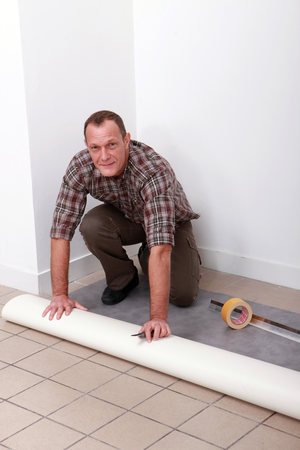
Check out these links:
United States
UK & Ireland
- Flooring: http://www.recofloor.org/about-us/
- Windows: https://www.eurocell.co.uk/eurocell-recycle
Australia
- Flooring: https://www.polyflor.com.au/media/env-pdfs/Recofloor-Brochure-2017.pdf
- Business: If you have a regular source of clean PVC https://vinyl.org.au/find-a-recycler
If you have a link for another country or recycler, we will be happy to share it here. Please use our contact form to let us know.
What is recycled PVC made into?
PVC can be made back into new flooring as demonstrated by the Recofloor take back scheme. It can also be made into piping, decking, fencing, paneling, gutters, carpet backing, floor tiles and mats, mud flaps, cassette trays, electrical boxes, cables, traffic cones, garden hoses, and mobile home skirting.
Some items you might not have considered that can be made out of recycled PVC are kayaks, bins, traffic cones, and post boxes.
Summary
Polyvinyl Chloride, or PVC, is one of the oldest synthetic materials. It has developed from a humble sewer pipe to be a very common material in our homes and lives. Found around our home in our flooring, gutters, window frames, fencing, tiles, and appliances. The main reason it is so common is that it is cheap to make, lightweight, very strong, and resistant to oil and chemicals.
Recycling PVC is quite tricky. It can be quite toxic when disposed of, and recycling is not very accessible to the general community. If you have rigid PVC bottles or containers, these can most likely be recycled in your curbside recycling. Some recycling programs exist for specific types of PVC, such as the Recofloor vinyl flooring take-back scheme in the UK, Ireland, and Australia. Check the links above for more info.
If you want to know about the other Plastic recycling codes, check out these articles :
- Plastic by Numbers Summary
- Plastic Number #1 – PET or PETE
- Plastic Number #2 – HDPE
- Plastic Number #4 – LDPE
- Plastic Number #5 – PP
- Plastic Number #6 – PS
- Plastic Number #7 – Other
Sources
- Last updated 2020, Polyvinyl chloride, Wikipedia
- Last updated 2019, VinyLoop, Wikipedia
- 2017, What Does That Chasing Arrow Symbol on Plastics Mean?, plasticsmakeitpossible.com
- Mary Bellis, 2019, History of Vinyl, thoughtco.com
- Vinyl Info, Vinyl Institute
- PVC waste, Vinyl Council Australia
- Credit Card, How Products are Made, madehow.com


